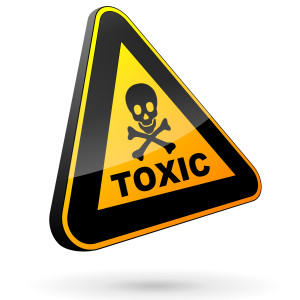With the World Health Organization’s decision not long ago to classify bacon “alongside known carcinogens including asbestos, tobacco, arsenic and alcohol,” regulators have drawn a line in the sandwich. With warning labels proposed for BLT’s, now is an appropriate time to take stock of our system for determining cancer risk, in terms of both when and how the public should be informed and protected.
When everything has a warning label, nothing has a warning label. It is too time-consuming to verify each warning individually, yet indiscriminate faith would rule out everything from coffee and apple pie to the “Happiest Place on Earth.” At this point the public could be forgiven for accusing regulators of crying wolf. But this blame would be misplaced. The regulators’ own science does in fact tell them that these risks are both real and cause for alarm.
That’s because baked into the cake of regulatory cancer risk assessment is the assumption that any dose of a carcinogen does proportional, cumulative harm. This is the Linear No-Threshold assumption, famously referred to as the “any exposure” theory, and it is one of the main tools in the risk-assessor’s toolbox. Its use means that regulators must assume that exposure to even one molecule of a carcinogen puts an individual at an irreversible, accumulating risk. The upshot is that no matter how trivial the exposure, cancer risk assessments justify — almost mandate — a public warning.
And there’s the rub. We are exposed to trivial amounts of all sorts of chemicals every day, most of which are naturally occurring. But because scientists’ ability to measure exposure in this low-dose region is extremely limited, regulators must make an assumption about the body’s response. If they assume a “threshold” response, they’ll tell us that these exposures pose no danger. If they assume a “hormetic” (beneficial) response, they’ll actually encourage a low dose of exposure. But, true to its name, the “any exposure” assumption fills this gap in our knowledge with the notion that any dose is unsafe.
When you have a hammer, everything looks like a nail — and Linear No-Threshold is quite a hammer. It drives regulators to expand their bureaus as they chase after an endless series of risks. And what’s “safe” for a regulator is (to declare) what’s unsafe for consumers.
As a former FDA commissioner Alexander Schmidt put it, “Rarely, if ever, has Congress held a hearing to look into the failure of FDA to approve a new entity; but it has held hundreds of hearings alleging that the FDA has done something wrong by approving a drug.” This lesson applies to all regulatory agencies and weighs heavily on the minds of bureau chiefs; thus the abundance of warnings and the resulting public confusion.
For a health and safety bureaucracy there is no profit — only risk — in letting products to market. Producers subject to market and judicial forces are incentivized to satisfy customers and to be proactive about consumer safety. They jealously guard their brands’ reputations, and they fear liability.
Yet policymakers argue that producers will chronically under-advertise the risks of their products. They often cite this “market failure” to justify signs, labels and loud public proclamations financed out of the public purse. While on the surface this may sound reasonable, without the dual market constraints of profit and liability a regulatory bureaucracy risks advertising too much risk.
The problem is institutional in nature. Instead of correcting “market failure” the bureau may end up producing “government failure,” trading the fear of underproduction for the reality of overproduction. And overproduction always comes with a cost. Overstating danger increases danger. The social cost is not just the agency’s misdirected resources. It is also in the crowding out, diluting or even discrediting of its own message. Bureaucratic solutions should come with a warning label.

